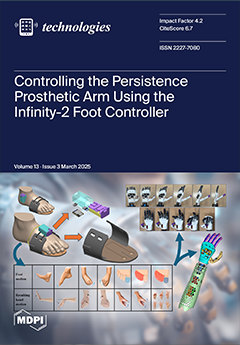In the field of histological analysis, one of the typical issues is the analysis of single cells contained in regions of interest (i.e., ROIs). Today, several commercial, freely available, and open-source software options are accessible for this task. However, the literature lacks recent
[...] Read more.
In the field of histological analysis, one of the typical issues is the analysis of single cells contained in regions of interest (i.e., ROIs). Today, several commercial, freely available, and open-source software options are accessible for this task. However, the literature lacks recent extensive reviews that summarise the functionalities of the opportunities currently available and provide guidance on selecting the most suitable option for analysing specific cases, for instance, irregular freehand-defined ROIs on brightfield images. In this work, we reviewed and compared 14 software tools tailored for single-cell analysis within a 2D histological freehand-defined image ROI. Precisely, six open-source tools (i.e.,
CellProfiler,
Cytomine,
Digital Slide Archive,
Icy,
ImageJ/Fiji,
QuPath), four freely available tools (i.e.,
Aperio ImageScope,
NIS Elements Viewer,
Sedeen,
SlideViewer), and four commercial tools (i.e.,
Amira,
Arivis,
HALO,
Imaris) were considered. We focused on three key aspects: (
a) the capacity to handle large file formats such as SVS, DICOM, and TIFF, ensuring compatibility with diverse datasets; (
b) the flexibility in defining irregular ROIs, whether through automated extraction or manual delineation, encompassing square, circular, polygonal, and freehand shapes to accommodate varied research needs; and (
c) the capability to classify single cells within selected ROIs on brightfield images, ranging from fully automated to semi-automated or manual approaches, requiring different levels of user involvement. Thanks to this work, a deeper understanding of the strengths and limitations of different software platforms emerges, facilitating informed decision making for researchers looking for a tool to analyse histological brightfield images.
Full article





